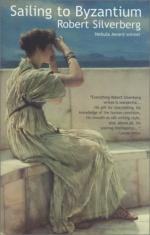|
This section contains 2,205 words (approx. 8 pages at 300 words per page) |

|
Source: Eggenschwiler, David. “Nightingales and Byzantine Birds, Something Less Than Kind.” English Language Notes 8, no. 3 (March 1971): 186-91.
In the following essay, the author argues that Yeats's bird of “hammered gold” in “Sailing to Byzantium” and Keats's nightingale represent more “different ideals of art” than prevailing criticism suggests.
The nightingale of Keats's ode and the golden bird of Yeats's “Sailing to Byzantium” are usually considered to be close kin. As ideals of unchanging art, opposed to natural creatures born for death, they seem to coincide in the dialectics of the two poems. Of course, they are not identical, for Yeats's bird of “hammered gold and gold enamelling” is a more artificial image than Keats's “light-winged Dryad of the trees”; but commentators have usually considered this difference to be a matter of degree, not kind. The more conceptual Yeats is said to renounce temporal and sensuous nature in more extreme...
|
This section contains 2,205 words (approx. 8 pages at 300 words per page) |

|


